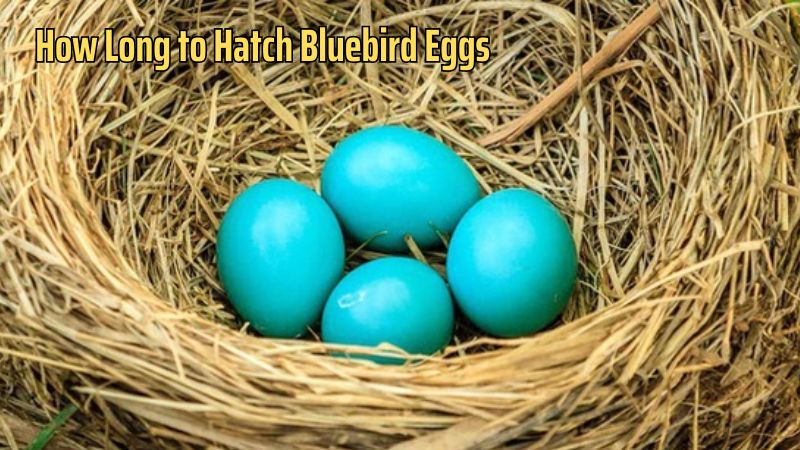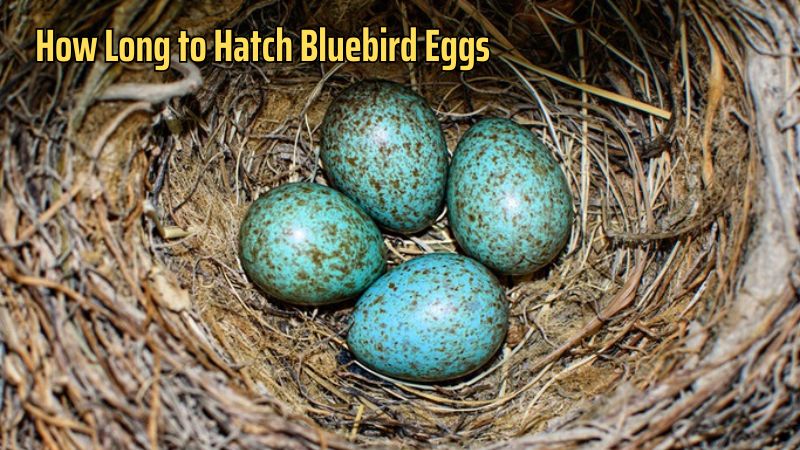Bird Training
How Long to Hatch Bluebird Eggs?
Understanding how long to hatch bluebird eggs is crucial for both bird enthusiasts and conservationists. The incubation period provides insights into the development of the embryos and the factors that influence their successful hatching.
By exploring the timeline and conditions required for bluebird eggs to hatch, we can better support their conservation and ensure the health of these vibrant, captivating birds, let’s find out more details with Bird 04!
How Long to Hatch Bluebird Eggs?
Overview
The average incubation time for blue birds generally ranges from 12 to 18 days, depending on the species. During this period, the parent birds diligently keep the eggs warm to ensure proper development.
Factors Affecting Incubation Time
- Species of Blue Bird: Different species of blue birds, such as the Eastern Bluebird, Mountain Bluebird, and Western Bluebird, may have varying incubation periods. For example, the Eastern Bluebird typically incubates its eggs for around 12 to 14 days, while other species may require slightly longer or shorter times.
- Egg Size: Larger eggs tend to require a longer incubation period compared to smaller eggs. Larger eggs contain more nutrients and require more time for the embryo to fully develop before hatching.
- Environmental Temperature: The temperature of the surrounding environment plays a crucial role in the incubation process. If the temperature is too low, it may extend the incubation time, while excessively high temperatures can disrupt the embryo’s development. Ideal conditions are essential for maintaining a steady incubation period.
- Number of Eggs in the Nest: When a blue bird lays multiple eggs in a single clutch, the incubation period may increase slightly due to the need to evenly distribute warmth across all the eggs. More eggs may also require the parent birds to spend more time adjusting their position to ensure even incubation.
These factors collectively influence the overall duration of the incubation period, ensuring that the blue birds’ eggs hatch successfully in a timely manner.

Incubation Process of Blue Birds
Nest
Blue birds typically construct their nests in tree cavities, nest boxes, or other sheltered locations. The nests are usually made of soft materials such as grass, pine needles, feathers, and small twigs, providing a cozy environment for the eggs. These nests are built in layers, with a sturdy base and a soft inner lining to keep the eggs warm and protected.
Incubation Method
In most species of blue birds, the female takes on the primary responsibility for incubating the eggs. She sits on the eggs to maintain a stable temperature, only leaving briefly to feed or stretch. The male plays a supportive role by guarding the nest, protecting it from predators, and occasionally bringing food to the female.
In some cases, both parents may take turns incubating the eggs, but the female usually does most of the incubation to ensure proper heat distribution and care for the developing embryos. The eggs are typically turned regularly to ensure even warmth and prevent the yolk from sticking to the shell, aiding in healthy embryo development.
Embryo Development Stages in Blue Bird Eggs
First Week
During the first week of incubation, the embryo begins as a small cluster of cells that rapidly divide and differentiate. By the end of the first few days, the heart starts to form, and blood vessels become visible, supplying nutrients to the growing embryo. The head, spine, and other essential organs begin to take shape. At this stage, the embryo is still very delicate and relies heavily on the warmth provided by the parent bird.
Second Week
In the second week, significant development occurs. The embryo’s major organs continue to form, and its eyes, wings, legs, and beak start to develop. The heart is fully functional, pumping blood throughout the embryo’s body. Feathers begin to grow, and the skeleton hardens. By the end of the second week, the chick’s body is well-formed, although it remains in a curled position inside the egg.
Final Days
In the last few days before hatching, the chick’s development is nearly complete. The feathers have grown, and the chick’s movements become more noticeable as it prepares to hatch. The chick absorbs the yolk sac, which provides essential nutrients to sustain it during the hatching process.
It also begins practicing breathing through the air cell inside the egg, which will help it take its first breaths upon hatching. Finally, the chick uses its egg tooth, a small, sharp protrusion on its beak, to break through the eggshell, a process called pipping, signaling that it’s ready to emerge.
Factors Affecting Hatch Success Rate
Weather
Weather conditions play a crucial role in the success of egg hatching. Extreme weather such as heavy rain, strong winds, or excessive heat can disrupt the incubation process. For instance, prolonged rain can lead to a drop in temperature, affecting the embryo’s development, while excessive heat can cause overheating or dehydration of the eggs.
Consistent and moderate weather conditions are essential for maintaining the optimal temperature and humidity levels required for successful incubation.
Natural Predators
Natural predators such as egg-eating birds, snakes, and rodents pose a significant threat to eggs. These predators may find and consume eggs before they have a chance to hatch, leading to decreased hatch rates.
Nest protection strategies by parent birds and their vigilance are crucial in minimizing these risks, but despite their efforts, predation remains a common challenge for egg survival.
Human Activity
Human activities, including deforestation, habitat destruction, and environmental pollution, can negatively impact the hatching success of birds. Deforestation reduces available nesting sites and increases exposure to predators, while pollution can contaminate the eggs or disrupt the birds’ reproductive cycles.
Conservation efforts that mitigate these impacts, such as protecting habitats and reducing pollution, are vital for ensuring higher hatch success rates and the overall health of bird populations.
Conclusion
In summary, understanding how long to hatch bluebird eggs is essential for ensuring their successful development. The incubation period typically ranges from 12 to 18 days, depending on various factors like temperature and egg size. By paying attention to these details, we can support the health of bluebird populations and contribute to their conservation efforts effectively.





